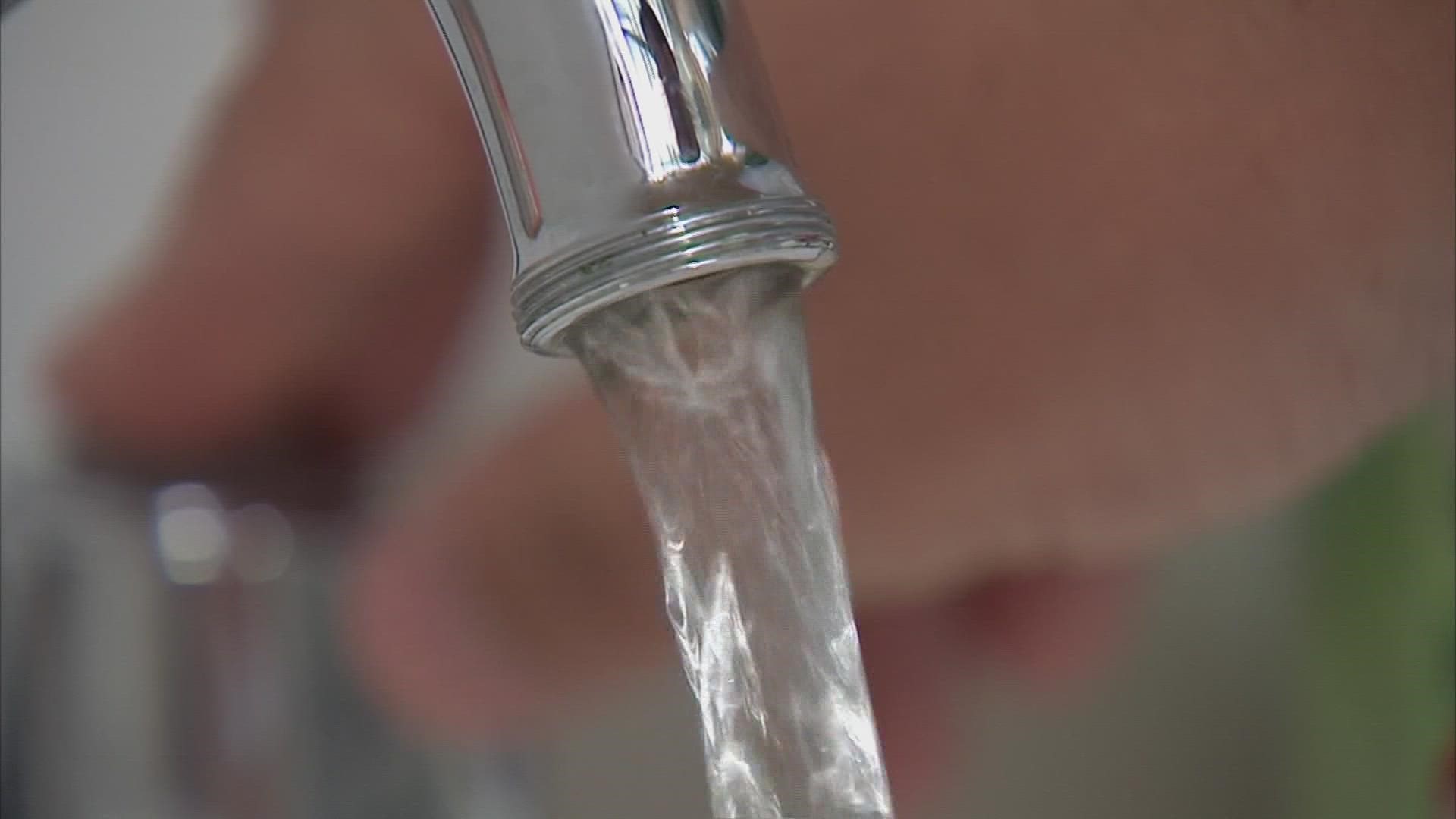OHIO, USA — The United States Environmental Protection Agency announced Wednesday the first-ever national, legally enforceable drinking water standard to protect communities from exposure to harmful per- and polyfluorinated alkyl substances (PFAS), also known as "forever chemicals."
The chemicals have been linked to cancer and other health problems. They are referred to as "forever chemicals" because they rarely break down in the environment or our bodies.
"Forever chemicals" are so ubiquitous that they can be found in the blood of almost every person in the United States.
The ruling now puts water departments across the country on notice. And it will cost them.
In March, 10TV reported that the city of Columbus expects to spend up to $100 million at its Dublin Road plant to meet the new guidelines.
Del-Co Water Company said the cost would be $8 million to $10 million.
Nationally, the EPA says the cost of water utilities is estimated at $1.5 billion.
That money will eventually be passed down to water rate customers.
Under the regulations, water departments are required to notify the public when water tests for PFAS exceed four parts per trillion.
In a statement sent to 10TV, the city of Columbus said "Monitoring of our finished (tap) water began in February 2024 as part of our participation in the 5th round of the Unregulated Contaminant Monitoring Rule as required by U.S. EPA. That data will appear in our annual Consumer Confidence Report. Based on our monitoring, our three drinking water plants would currently be in compliance with the proposed regulation for PFAS in drinking water.
We use complex, state of the art treatment processes in our drinking water plants, and will continue to monitor both our source water and tap water to evaluate if additional treatment options, including granular activated carbon, may be required to meet the new MCL drinking water standards. The health and safety of our customers is our first priority, and are taking steps to ensure we will remain in compliance with all drinking water standards.
If the scenario were to arise where Columbus is out of compliance with the MCL, Columbus DPU may have to spend hundreds of millions of dollars to treat PFAS at some of our water plants to ensure we remain in compliance. To make sure our consumers do not solely bear those costs, the Columbus City Attorney’s Office – on behalf of our department – filed a lawsuit to stop PFAS pollution at the source by joining hundreds of other cities suing PFAS manufacturers to clean up the mess. The responsibility of paying to treat PFAS should lie with those who produced it for generations, not our customers."
The EPA says public water systems have three years to complete their monitoring. If they find levels that exceed four parts per trillion, they have two years to purchase and install equipment designed to filter out PFAS.
Del-Co Water Company has already contacted a firm to retrofit its plant. The city of Columbus has not.
Susan Pinney, director of the Center for Environmental Genetics at the University of Cincinnati, led a study of young girls who were exposed to PFAS that was found in the Ohio River,
“This is the first step in helping to reduce the body burden of PFAS in persons who live in the USA. Since it takes such a long time to eliminate PFAS from our bodies, even small amounts in water will create an increasing body burden. However, in many municipalities, the water treatment systems will need to be upgraded to expensive new technology. Congress needs to allocate funds to help them to do that," Pinney said.
The EPA also announced $1 billion in new funding through the Bipartisan Infrastructure Law to help states and territories implement PFAS testing and treatment at public water systems and to help owners of private wells address PFAS contamination.
“This is part of a $9 billion investment through the Bipartisan Infrastructure Law to help communities with drinking water impacted by PFAS and other emerging contaminants – the largest-ever investment in tackling PFAS pollution," said a release from the EPA.
An additional $12 billion is available through the Bipartisan Infrastructure Law for general drinking water improvements, including addressing emerging contaminants like PFAS.
At least 45% of the nation’s tap water is estimated to have one or more types of PFAS, according to a study by the U.S. Geological Survey.

